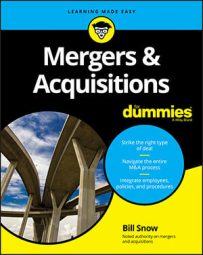The seller in an M&A deal must make the case for valuation. Lucky for you Sellers, here’s a four-pronged attack that, when executed properly, has fetched a figure higher than the usual upper limit of 6X EBITDA.
But first, keep the following pointers in mind as you consider what you think your company is worth:
Take control of the process. Sellers should be proactive in setting appointments and setting the tone for all discussions. Letting Buyer run the show doesn’t usually result in Buyer willing to pay a premium.
Have reasonable expectations. Buyers aren’t as interested in how great your company was a few years ago as they are in its current financial performance, its future prospects, and the general state of the economy. Too many business owners hold on to peak year valuations, believing that those valuations should still apply.
Don’t expect the Buyer to pay more for no good reason. One of the biggest mistakes Sellers make is expecting Buyer to pay more “just because.” Here’s how it manifests itself in the mind of Seller:
Just because Buyer has money, she should pay more.
Just because Seller has a great business, Buyer should pay more.
Buyers don’t pay more “just because.” They pay prices they can support.
Don’t assume Buyers have unlimited amounts of money. Even if they did, they wouldn’t be willing to pay unlimited prices for your company. A wise Buyer carefully measures the relative value of an investment, comparing it against other options, before proceeding with a deal.
Make sure the company is not a commodity
If the company you’re selling is going to garner a compelling valuation, it needs to have an intangible quality, a super-special secret sauce. This quality that sets it apart may take the form of a recognizable brand name, outsized revenue and profits, great growth, a hot industry, or anything that differentiates the company from the drab and boring competition and provides something unique and different for Buyers.
If a company is little more than a commodity, getting a favorable valuation can be a challenging proposition.
Gotta have competition: Shop around
If you’re negotiating with one potential Buyer, you’re at the mercy of that Buyer. Even a company that offers a unique and differentiating product will have a challenging time convincing a Buyer to pay a premium price if that Buyer is the only suitor.
Speak to as many Buyers as possible. The more the merrier. And if a Buyer balks at being part of a process that involves competition, don’t view the loss of that potential suitor as a problem. That Buyer probably would not be willing to pay a premium price.
Provide a road map of value for Buyer
Seller needs to show Buyer where the value is, especially in down markets. Seller should clearly and explicitly point out the value proposition (how the company will create value for Buyer) and not expect Buyer to figure this out on his own.
Although it may be a bit of guesswork, Seller should make some assumptions as to how the deal can improve Buyer’s bottom line and provide those assumptions to Buyer. Buyers may grumble that Seller has reverse engineered their financials, but this step helps signal that Seller has a grasp of the business’s value to Buyer.
Make it easy to do a deal
Don’t dwell on minor details. Counteroffers should be simple with a minimum of moving parts. If you want to get a deal done, refrain from introducing new elements into an offer. Instead, work from a Buyer’s offer, making adjustments to that offer rather than making wholesale changes.
Focus on the main deal issues and avoid getting tripped up by minor and inconsequential details. Don’t let nonissues get in the way of getting a deal done.

